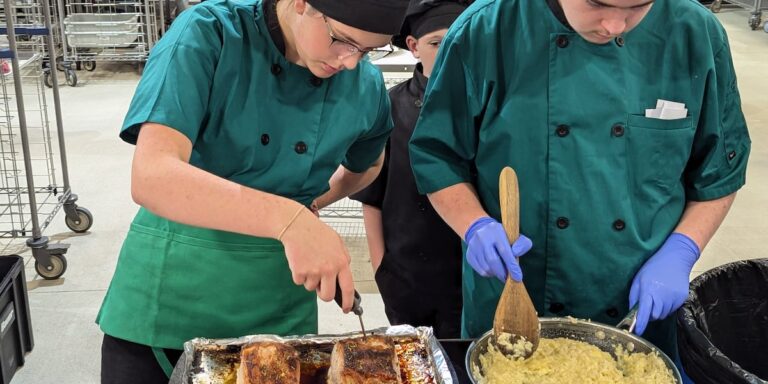Rising Inflation: Impact on October Thali Prices Revealed
The October Thali: How Inflation is Impacting Prices This Festive Season
When you think of October, what’s the first thing that comes to mind? Pumpkins? Halloween costumes? For many, October signifies the arrival of festive joy, family gatherings, and, of course, mouth-watering food – particularly the lavish thalis that grace our tables during this season. But hold on a minute! If you’ve been out and about, you might’ve noticed that wallet feels a little lighter than usual. That’s right! Rising inflation is significantly affecting thali prices this year. Let’s dive into what this all means for your festive dining experience.
Understanding Inflation and Its Grip on Daily Life
Simply put, inflation is when prices rise over time, diminishing the purchasing power of your money. Imagine it like this: you go to the market with a certain amount of cash, only to find that the same basket of groceries costs more than it did just a month ago. Frustrating, right? This phenomenon is particularly pronounced in countries like India, where many factors, both local and global, influence food prices. From economic policies to seasonal changes, various elements are at play.
The Price Tags on October Thalis
The traditional thali! It’s a vibrant platter brimming with a variety of dishes, typically consisting of rice, bread, lentils, vegetables, and meat for non-vegetarians. It’s both a feast for the eyes and a delight for the palate. However, with inflation soaring, the previously reasonable prices for these thalis might be making you cringe. Here’s what you need to know about the current pricing landscape:
- Veg Thali: Prices have seen a noticeable spike, thanks to the fluctuating prices of essential vegetables like tomatoes and onions.
- Non-Veg Thali: Seafood and poultry have also experienced price hikes, influenced by increased feed costs and supply chain disruptions.
So why are thalis getting more expensive? Let’s break it down!
Key Factors Influencing Rising Prices
1. Supply Chain Snags
You’re probably familiar with the term “supply chain,” but let’s simplify it. It’s all about how food gets from the farm to your plate. When something disrupts this flow, like transportation strikes, bad weather, or even global crises, the cost often gets passed on to us, the consumers. If vegetables rot in transit, or if the price of shipping increases, guess who’s paying? You got it—the diner.
2. Seasonal Variability
Certain ingredients are seasonal. For instance, tomatoes are at their peak at specific times of the year. Unfortunately, when out of season, these items often come with a hefty price tag because they have to be sourced from far-off places. In October, we’re often in the transitional seasons, which means prices can fluctuate wildly. It’s like shopping for winter clothes in summer!
3. Global Economic Factors
Have you looked at the news lately? Events around the globe—from geopolitical tensions to natural disasters—can affect the price of goods. Oil prices, for instance, can significantly impact transportation costs and, in turn, affect food prices. So, when your neighbor grumbles about the cost of that delicious chicken curry, remember that it’s part of a larger, interwoven tapestry of economic factors.
What Can You Expect When Dining Out?
Perhaps you’ve been looking forward to your favorite restaurant’s October special thali. But brace yourself! You might have to pay a bit more or choose a different dish altogether.
Dining at Restaurants
Let’s say you typically shelled out Rs. 300 for your go-to veg thali. This October, that same thali could cost you anywhere from Rs. 350 to even Rs. 450, depending on where you are. Restaurants may also start introducing limited-time offers or smaller portions to cope with rising costs.
Street Food and Home Cooking
If you’re a fan of street food or home cooking, you might be in for a surprise as well. Home-cooked thalis might cost a bit less than dining out, but ingredients will still be pricier compared to last year. How about considering a potluck with friends and family? A fantastic way to share the burden (and the culinary joys) of higher prices!
Creative Ways to Adapt
So, what can you do? How do you keep enjoying thalis if prices are creeping up? Here are some tips and tricks to savor the flavor without breaking the bank!
Here are some ideas:
- Plan Your Meals: Make a list of dishes you want to prepare during festive gatherings and shop smartly.
- Buy in Bulk: If you can, grab vegetables or grains in larger quantities when they’re cheaper. This can save pennies over time!
- Explore Local Markets: Check out local farmers’ markets for fresher and often cheaper produce.
- Try Seasonal Recipes: Stick to cooking with what’s abundant and available in the market. Seasonal foods are often cheaper and taste better!
- Cook at Home: Invite friends over for a cooking afternoon. Sharing expenses means less out-of-pocket costs for everyone!
Conclusion
Rising inflation is undeniably putting pressure on our beloved October thalis, making it harder to enjoy the richness of festive dining without feeling the pinch. However, by understanding the contributing factors and being a little savvy with your choices, you can still have a phenomenal food experience this festive season. With creativity, planning, and collaboration, you can keep both your family and your budget happy.
FAQs
Rising thali prices are often due to supply chain issues, seasonal variability in ingredient availability, and global economic factors like changes in oil prices and demand shifts.
2. How can I save on thali prices this October?
You can save by planning meals, buying in bulk, shopping at local markets, cooking at home, and focusing on seasonal recipes to minimize costs.
3. Is it cheaper to eat out or cook at home?
While eating out can be convenient, cooking at home typically offers more cost-effective options for a thali, especially when sharing the expense among friends and family.
4. Why are some ingredients more expensive than others?
The cost of ingredients can vary based on seasonality, demand, transportation costs, and local availability, affecting both public and commercial prices.
5. Can I still enjoy thalis despite rising costs?
Absolutely! By being strategic about meal planning and sourcing, you can still indulge in your favorite thalis without straining your wallet too much.







